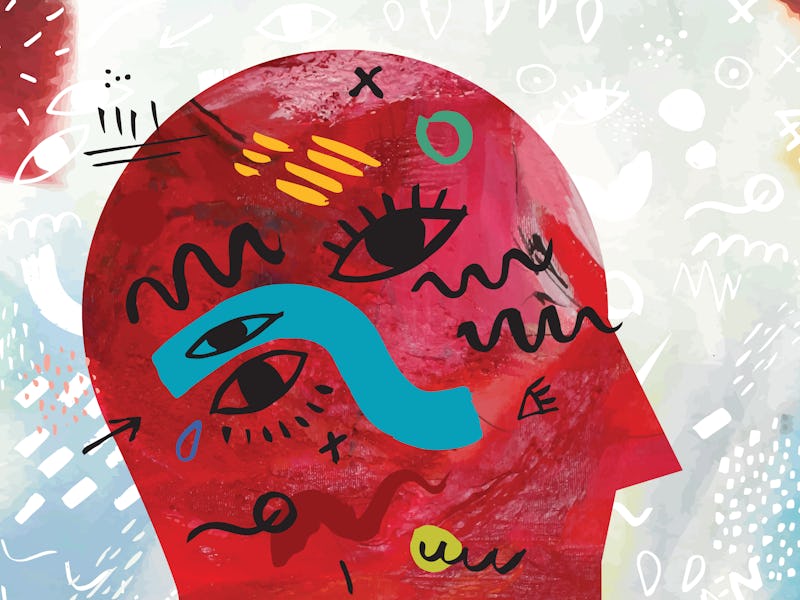Brain study reveals what happens when fears take hold
New research suggests early interventions can help prevent fear from progressing into anxiety.

There’s an emerging view that psychiatric disorders are not due to chemical imbalances in the brain and instead are a disturbance in brain circuits. This perspective, neurobiologist David Anderson explained in a recent lecture, treats the emotional brain more like “a computer than a bowl of chemical soup.” Chemicals like serotonin and dopamine still matter, but flooding the brain with these chemicals with something like Prozac is an inelegant solution. Instead, circuits should be targeted.
The issue is that our understanding of the biological basis of emotions is still poor. For future mental health treatments to exist, we have to discern what neural circuitry underlies what emotions. Because we have to get inside the brain to really come to this understanding, scientists are turning to animals.
And in a recent study, scientists made a breakthrough with the help of mice. In a paper published in November in the journal NeuroImage, scientists document, for the first time, how a single exposure of acute fear can evolve to ignite new patterns of brain activity over time — if an individual is vulnerable to persistent fear.
This marks a step toward explaining why fear from frightening events can turn into lifelong anxiety, and why some people more easily recover from scary experiences.
Digging into the details — Neuroscientist (and composer) Elaine Bearer is a professor at the University of New Mexico and the study’s senior author. What Bearer really wants to understand, she tells me, is how the integrated brain works — how does it come together as a coordinated system, linking the body and behavior? Studying fear, she says, is one way in.
Her team compared how wild mice and mice genetically modified to not have a serotonin transporter gene reacted to a smell that simulated a predator odor. Previous studies suggest knocking out that gene produces vulnerability to anxiety. Mouse brains were captured with magnetic resonance imaging before, during, and after exposure to the scary smell compared to mouse brains that were not exposed to the smell.
Overall, the team observed differences in neuronal activity in 45 sub-regions throughout the brain. Some of these regions, like the amygdala and the hypothalamus, are known to respond to fear and anxiety. However, other involved zones, like the brain’s reward circuitry, were previously unlinked.
Initially, and importantly, brain activity related to acute fear was pretty much the same in both types of mice. But after eight days, Bearer says, something changed. The wild type mouse was happily wandering around the cage, while the modified mouse was still cowering. This mouse still appeared to believe there was a threat, even though there was not.
Behind the scenes, brain activity in all the mice exposed to the predator smell turned on when exposed to the scent, reflecting an evolutionarily conserved response to danger. Normally, Bearer explains, when danger goes away, this activity prompts us to avoid it if it comes back. We don’t imagine it’s continuously there because the neural activity that’s activated by the experience of danger quiets down.
But in the serotonin deregulated brain — the brains of the mice without the critical gene — the neurons didn’t quiet down. Other neurons became activated by excessive activity and screamed at the mouse to protect itself.
“The acute fear — which is very functional and very evolutionarily important — that important fear response didn’t resolve normally and transitioned to some other higher activity in the brain,” Bearer says.
The big idea — This means that the brain activity in anxiety is not the same brain activity involved in an acute fear response. Anxious brain activity stretches and is elevated across many specific regions, and typical coordination ceases.
What’s uncertain, Bearer says, is if anxiety is one brain activity or if there are multiple brain activities that “give a person an enhanced sense of doom.” There’s also a question of how this experiment would turn out if the study subjects were humans. Unlike a mouse, you can’t knock out that serotonin gene in people.
Still, the research provides a foundation for eventually understanding why bad life experiences can put one at risk for vulnerability to long-term anxiety, disorders, and addictions. Even the normal mice in the experiment weren’t totally unchanged by the ordeal.
“[The mouse] looks totally exactly identical to this way before it had this acute fear, but its brain is not totally back to normal,” Bearer says.
“Its brain has some activity that wasn't there before. And we think this activity is like a signature of this event. If the mouse experiences it again, the brain will recognize it and perhaps be either less fearful or more fearful.”
That answer isn’t known yet because it hasn’t been tested for yet. But it is a clue. And in the short-term, the study is a sign that early interventions can help prevent fear from progressing into anxiety. Techniques like mindfulness can help for now, before more targeted approaches exist.